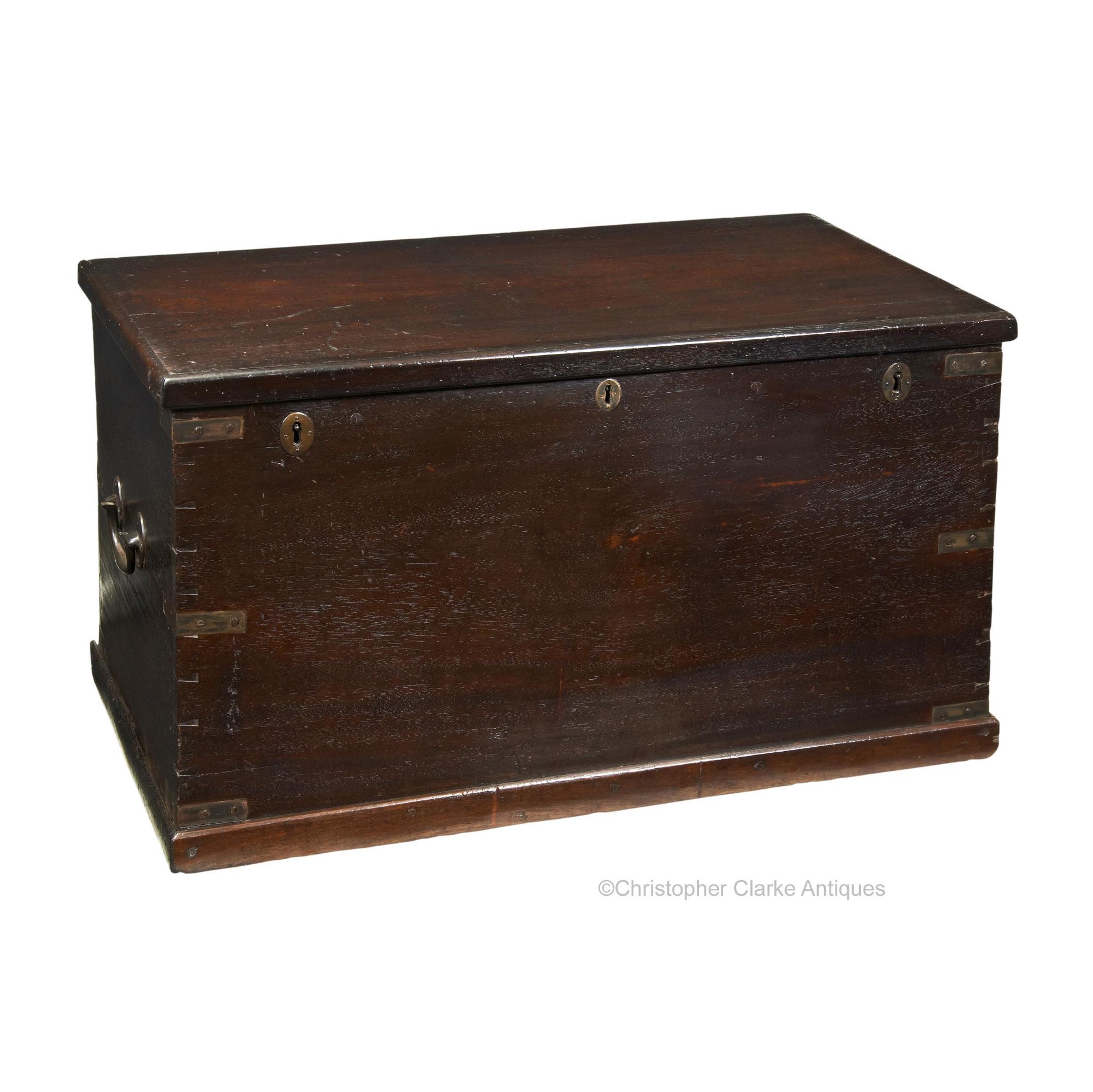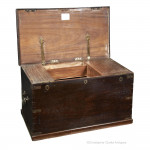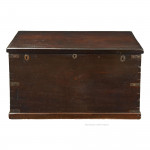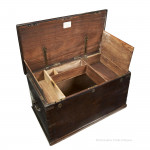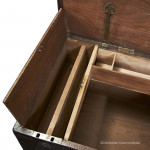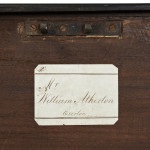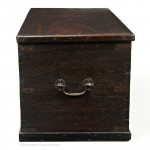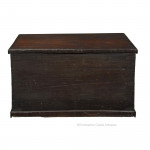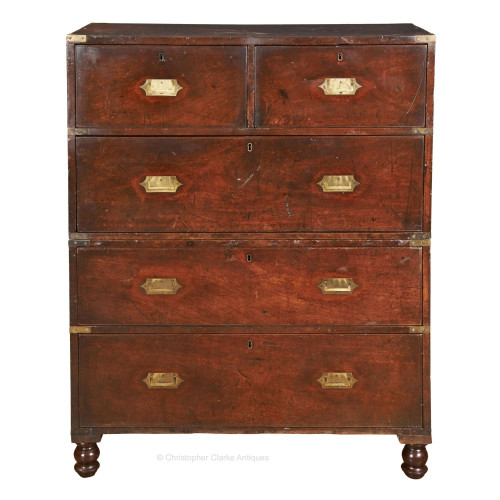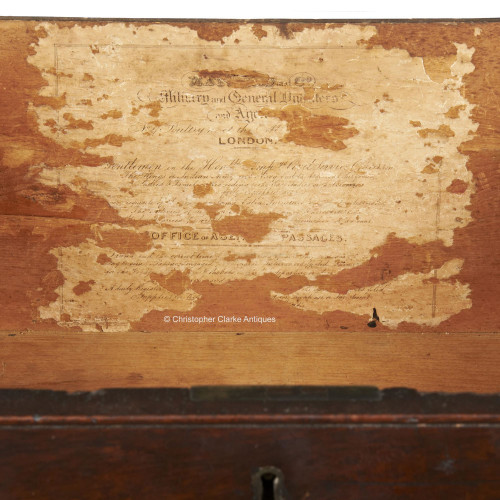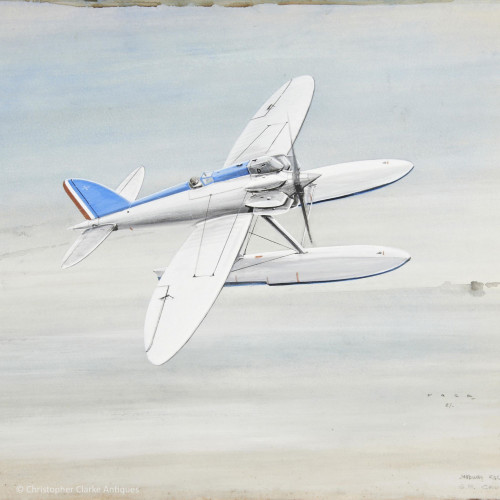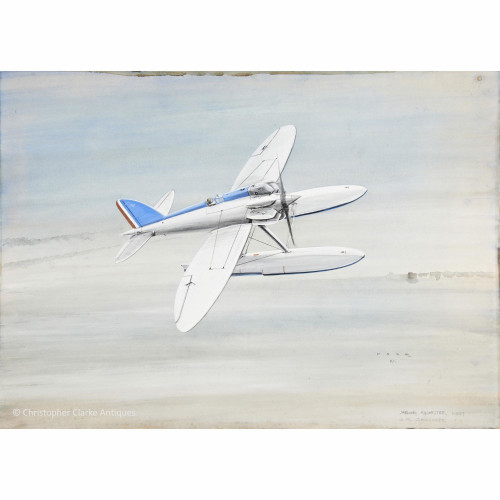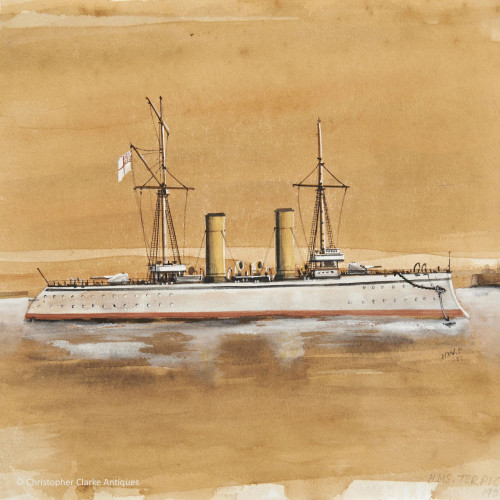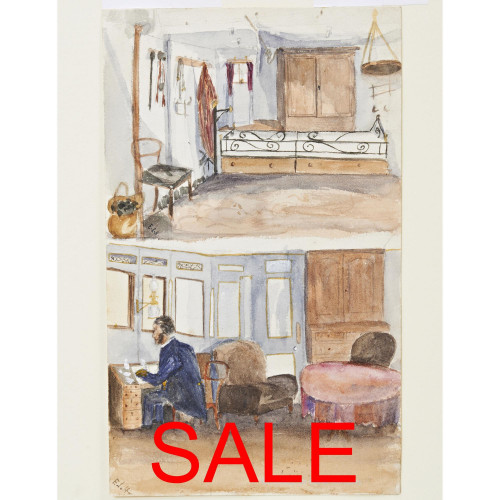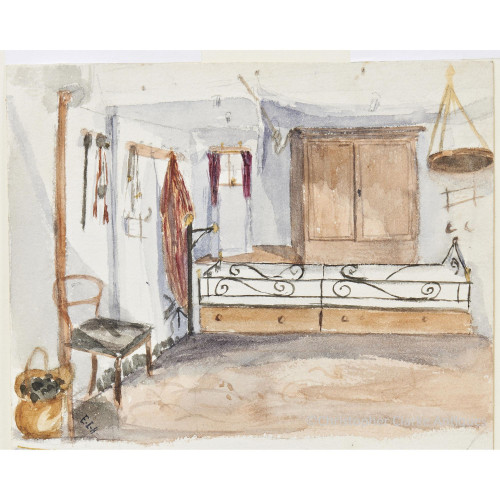William Atherton's Brass Bound Trunk
William Atherton's Brass Bound Trunk
82818
This large sized brass bound Trunk is made of padouk.
It has good, heavy brass or gun metal handles that are wider to the bale than most and have developed a lovely dark patina that makes it difficult to ascertain the alloy. The trunk is made with open dovetails with three brass straps to strengthen the joints to each upright corner. The lid has an applied thumbnail moulding to give it a comfortable fit to the base. It is supported by two wide brass hinges and two long hinges terminating with a fleur de lys. These long hinges hold the top open and also point to the trunk's earlier age.
The interior of the trunk is more involved than most with a large box to the right, a shorter one to the left and an open compartment with divider to the back between them. The right-hand box has a replaced pine base board and the front edge of the lid has a later batten added to increase its depth. Its possible that this compartment was damaged at some time and restored. The box to the left is more the size of a traditional candle box and has its own lock. It has a base board made to tip to access the secret compartment below. The front of this compartment looks like it may be camphor wood.
The lid has three locks, a smaller one to the centre and a larger one to either side. There is a handwritten paper label to the lid interior noting the owner 'Mr. William Atherton, Everton' and the number '1244'. We have found three generations of William Athertons from the same family and a fourth with the same name, all from Everton. It is probable that this trunk belonged to William Atherton, born in 1803 to James Atherton, the founder of New Brighton. He was a Liverpool merchant dealing as a middleman between manufacturers in England and the newly opening market of Peru that had declared independence from Spain in 1821. He formed a partnership with John Begg in Peru called Begg, Atherton and Company. Begg operated out of Lima whilst Atherton was based in Tacna. Their partner in Liverpool was James Brotherston. It maybe that the trunk's three large locks was a reflection of the partnership. Textiles were shipped from Liverpool to Peru with bullion, coin, bills of exchange and local produce returning to England. Begg had very good contacts in Peru and Chile and the merchants worked on a commission basis as well as owning ships.
It could be a precarious business as an overseas merchant: the newly independent countries could still be volatile and the journey between Liverpool and South America could be risky due to both storms and privateers. Begg was wounded in 1814 when the Fanny, a ship he co-owned, was taken by the American privateer General Armstrong. In May 1830, Brotherston's company and that of Begg and Atherton were declared bankrupt. This may have been an effect of the 1825 stock market crash partly arising from speculative investments in Latin America.
This trunk is larger than most and the one-piece top has a rich, dark colour. It is also interesting for it's likely owner's connections with trade to South America. Early 19th Century.
Dimensions:
Early 19th Century
Padouk
William Atherton Everton
Campaign Trunk
RELATED ITEMS

